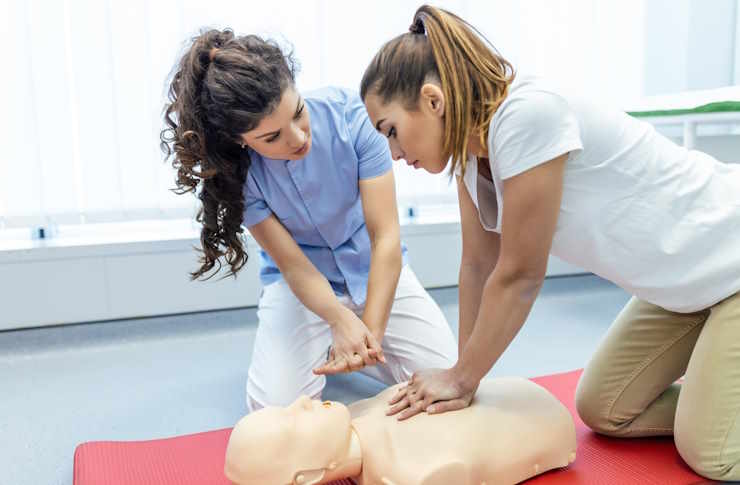Begin a Medical Assistant Career: Training Roadmap
Medical assistant training offers a fast, practical route into healthcare by teaching both clinical and administrative skills employers seek. Explore program lengths, hands-on externships, certification preparation (CMA, RMA, CCMA), costs, and job outlook—including BLS projections—to choose an accredited program and launch a rewarding medical assistant career.

Thinking about a career as a medical assistant? Training programs blend clinical practice and administrative skills to prepare you for a variety of healthcare settings. This guide breaks down program lengths, what you’ll learn, job prospects, how to pick an accredited school, typical costs, and practical next steps to move from student to employed medical assistant.
How long does medical assistant training take?
Program length varies by credential and delivery format. Common timelines include:
- Certificate programs: usually about 9 to 12 months.
- Diploma programs: often 12 to 18 months.
- Associate degrees: typically 18 to 24 months of full-time study.
Some institutions advertise accelerated tracks that can be completed in about six months; these are intensive and usually require full-time commitment. When selecting a timeline, weigh your current job, family responsibilities, preferred pace of learning, and whether you want greater depth (for example, an associate degree) that may broaden future career options.
Where will a medical assisting credential take you?
Employment prospects for medical assistants are strong. The U.S. Bureau of Labor Statistics projects about 16 percent growth in medical assistant jobs from 2021 to 2031, much faster than the average across all occupations. Demand is driven by an aging population, greater emphasis on preventive care, and continued expansion of outpatient services.
Medical assistants work in a wide range of settings, including physicians’ offices, community health centers, hospitals, outpatient surgery centers, and specialty clinics such as cardiology, dermatology, and orthopedics. The variety of environments makes this a flexible career path.
Core skills taught in training
Quality programs combine lectures, simulated labs, and supervised clinical rotations so graduates can step into entry-level roles confidently. Essential competencies typically include:
- Clinical skills: measuring vital signs, giving injections, preparing patients for minor procedures, wound care basics, and performing point-of-care lab tests.
- Administrative duties: appointment scheduling, maintaining medical records, basic billing and coding tasks, and handling insurance forms.
- Communication: professional patient interaction, clear handoffs to clinicians, and teamwork in busy clinical settings.
- Technical skills: navigating electronic health records (EHRs), using practice management systems, and digital documentation tools.
- Legal and ethical knowledge: protecting patient privacy (HIPAA), understanding elements of informed consent, and following state and federal healthcare regulations.
Most programs include simulated scenarios and clinical externships where students practice both front-desk and clinical responsibilities under supervision.
How to choose the right program
Selecting an accredited, career-focused program increases your chances of success. Consider these criteria when comparing schools:
- Accreditation: Verify recognition from bodies such as the Commission on Accreditation of Allied Health Education Programs (CAAHEP) or the Accrediting Bureau of Health Education Schools (ABHES). Accreditation can affect eligibility for certification exams and how employers view your credential.
- Well-rounded curriculum: Make sure the program covers both patient care procedures and administrative operations so you graduate with versatile skills.
- Hands-on training: Look for lab work, simulations, and externships or clinical rotations that offer real patient contact and practical experience.
- Certification preparation: If you plan to sit for national exams like the Certified Medical Assistant (CMA), Registered Medical Assistant (RMA), or Certified Clinical Medical Assistant (CCMA), choose a program that integrates exam prep into its curriculum.
- Career services: Resume help, interview coaching, and job-placement support can shorten your path to employment after graduation.
| Program Type | Typical Duration | Certification Preparation | Typical Cost Range |
|---|---|---|---|
| Certificate | 9–12 months | CMA, RMA | $1,200 - $4,000 |
| Diploma | 12–18 months | CMA, RMA, CCMA | $1,000 - $5,000 |
| Associate Degree | 18–24 months | CMA, RMA, CCMA | $6,000 - $15,000 |
Prices, rates, or cost estimates mentioned in this article are based on the latest available information but may change over time. Independent research is advised before making financial decisions.
Benefits of pursuing medical assistant training
Training as a medical assistant can be a practical investment for people seeking a relatively fast entry into healthcare. Advantages include:
- Faster entry to the workforce than many other healthcare careers.
- Diverse skill set that applies to both clinical and administrative roles.
- Strong job prospects supported by demographic and healthcare trends.
- Clear advancement pathways: many medical assistants move into nursing, specialty clinical roles, or healthcare administration with additional education.
- Rewarding patient-facing work that contributes to community health and wellbeing.
Next steps and tips for success
Begin by researching accredited programs near you and reputable online options. Visit campuses when possible or speak with admissions advisors to learn about scheduling, clinical placements, and student supports. Ask about graduate pass rates on certification exams and the types of clinical sites used for externships.
Plan your finances: investigate scholarships, grants, employer tuition assistance, and flexible payment plans. Treat externships as networking opportunities—strong performance during clinical rotations often leads to job offers.
Prepare a professional resume and practice interviewing so you can respond quickly to job leads after graduation. Maintaining strong attendance, asking questions during clinical rotations, and seeking feedback from instructors will accelerate your readiness for employment.
This article is for informational purposes only and should not be considered medical advice. Please consult a qualified healthcare professional for personalized guidance and treatment.






